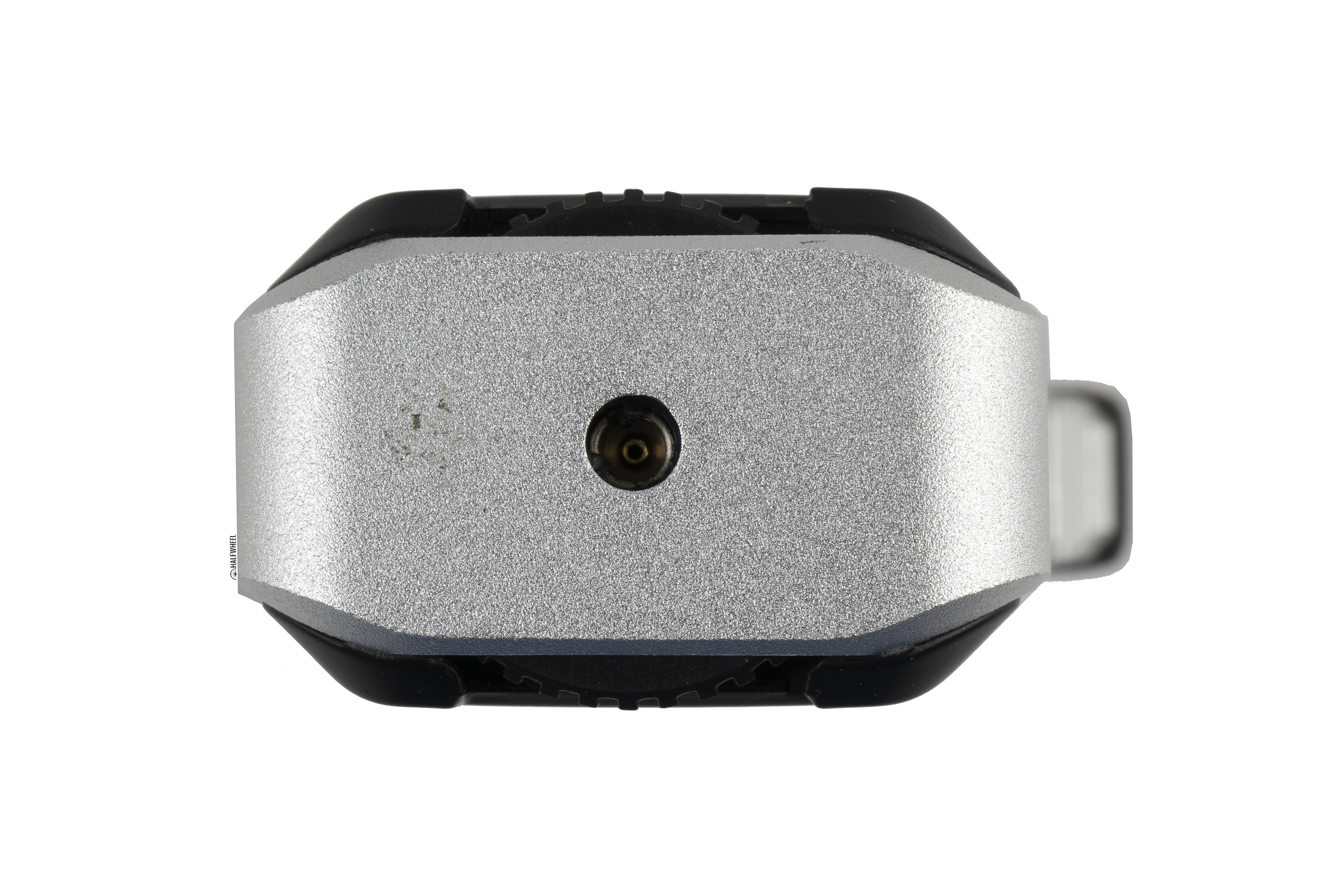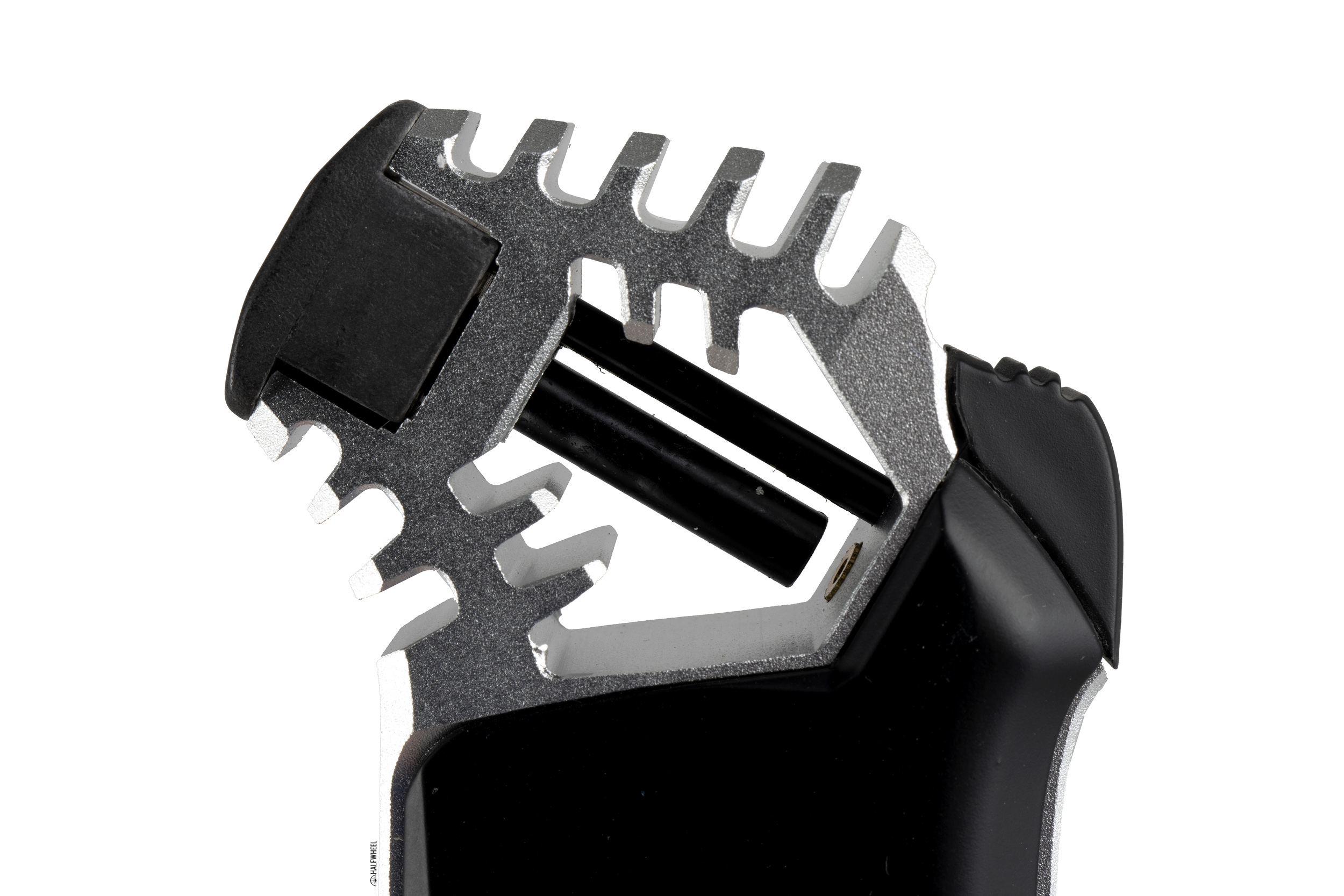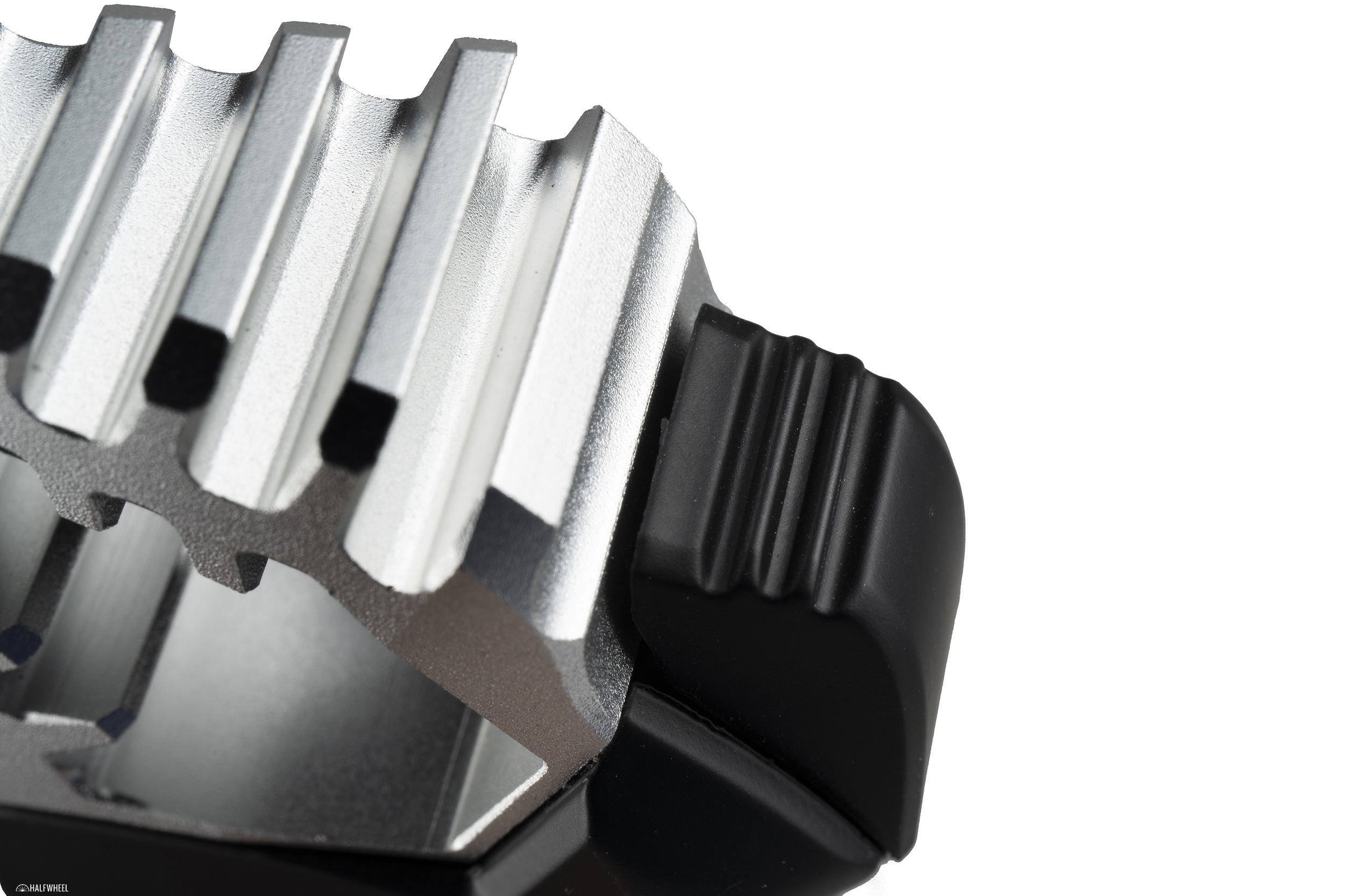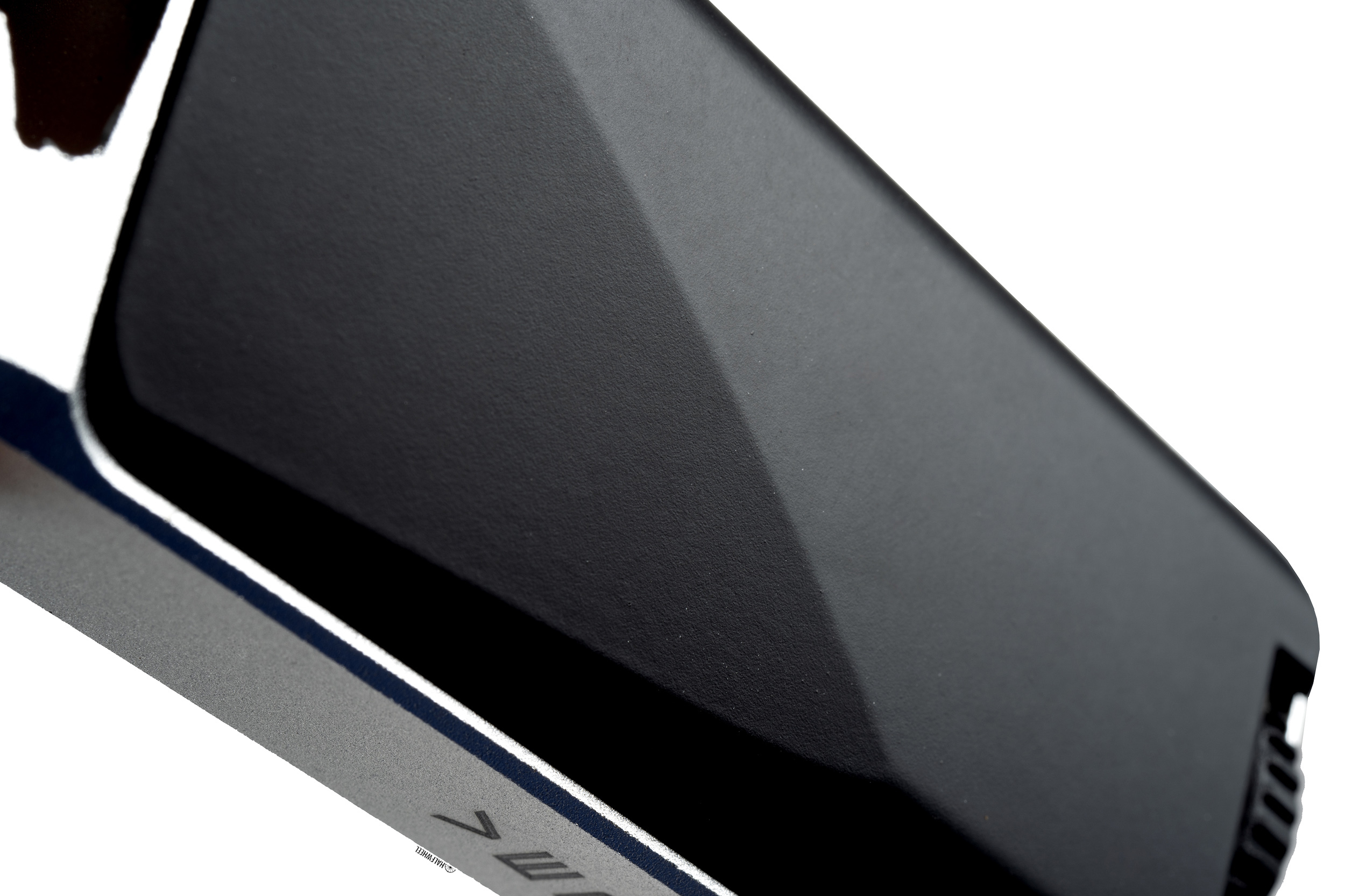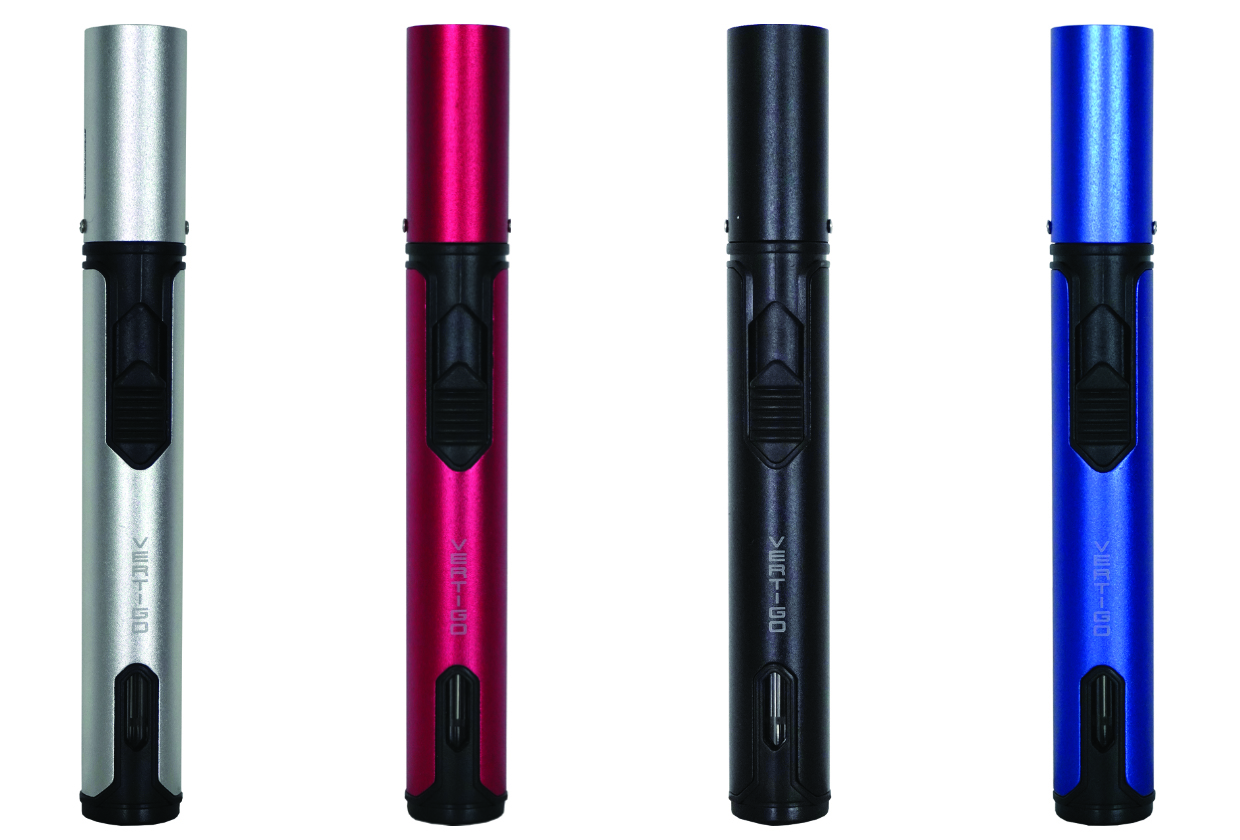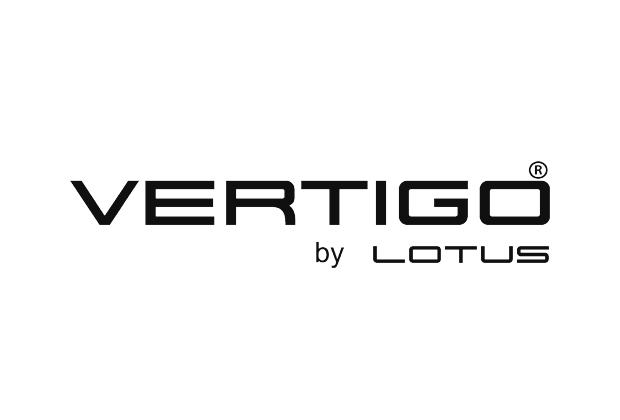In the weeks leading up to the Premium Cigar Association’s annual convention and trade show, we get a lot of product announcements. Most of them are about new cigars, but there are quite a few that announce new cigar accessories.
While my initial reaction to getting these announcements is to turn them into a story, I will almost always go back later in the day and take a closer look at the details and nuances of each new product, because they are almost always reinventing the wheel. In this case, how to cut and light your cigar, and occasionally what to do with the ashes along the way and the finished cigar.
That means reading the notes, looking at the images and trying to figure out just what might be truly different about a new product, and what might simply be the same core put in new packaging. It was that closer inspection that piqued my interest about the Vertigo Cyborg, as when I looked at it more closely, I couldn’t figure out if I was looking at an image of a broken lighter.
The reason for that is that the Cyborg delivers butane via a line with a gap in it; just as the butane comes out of the body of the lighter and turns the corner to get to the burner, there is an empty space. It is that point where the butane mixes with the ambient air to help combustion, a design that also means the lighter doesn’t have any air vents, another staple of lighter design in general.
WHAT IS IT?
The Vertigo Cyborg is a tabletop torch lighter that offers what the company describes as “an extra large” single flame torch. It also has a single action ignition and “extra large” fuel tank, though that seems more of a fitting term when comparing it to the tanks found on most pocket lighters. It’s probably in the same league as other tabletop lighters, but nowhere near something like the Alec Bradley Burner or Mega Burner or the Colibri Quasar. The company says the Cyborg will work at elevations up to 12,000 feet.
Its housing is made from aluminum, with three color options by way of side panels. It measures 4.5 inches tall, 2 inches wide and just under 1 inch thick, and weighs 3.5 ounces. It’s a size that is just too big to be a true pocket lighter, but it is probably on the smaller side for tabletop lighters. That said, you could carry it in your pocket or a larger travel humidor without much issue.
HOW MUCH DOES IT COST?
$24.99.
It is available in three colors: black matte, chrome and black, and a digital camouflage and gunmetal combination. As with all Vertigo lighters, it comes with a lifetime warranty.
HOW DOES IT WORK?
The single-action ignition does all the work, as pulling the lever back begins the flow of butane, where it flows up from the large internal tank and then pulled through the break and up the piping to the piezo ignition, where it is ignited by a piezo ignition. It’s not an inherently different design than other cigar lighters, though the gap in the fuel line certainly stands out, and creates for an interesting trick to show people as you can extinguish the lighter by blocking that line with a piece of paper or other item.
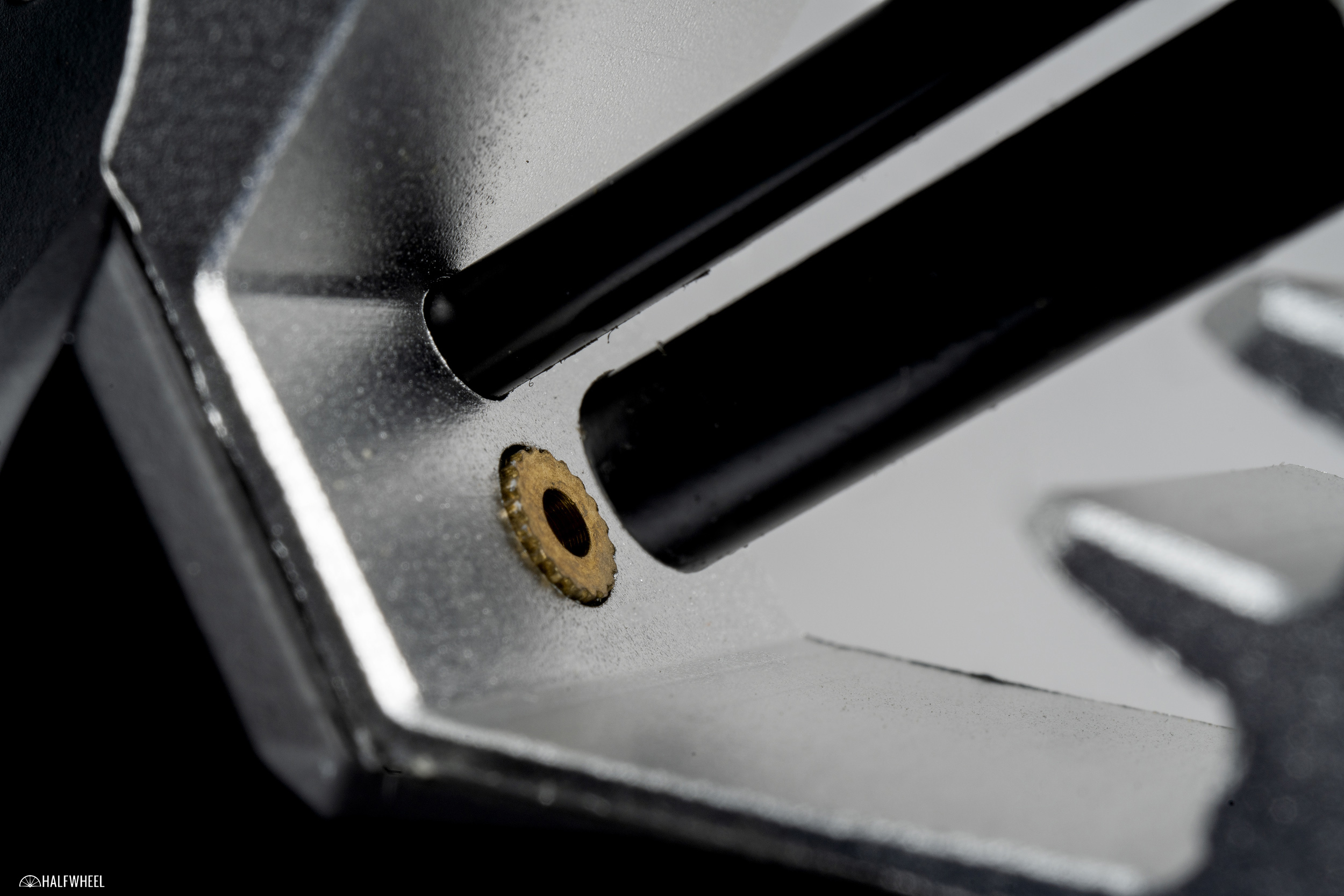
WHAT MAKES IT SPECIAL?
The break in the fuel line is far and away the most notable thing about the Vertigo Cyborg. This means the Cyborg lacks the traditional vents found on other lighters, instead, it draws in air from that open gap in a different path to ultimately get to the same result.
Finally, the design on the upper third of the lighter is rather unique, a series of fins that help cool the lighter after each use by dissipating the heat over a wider surface. It’s a design found in a number of applications from vehicles to electronics and beyond.
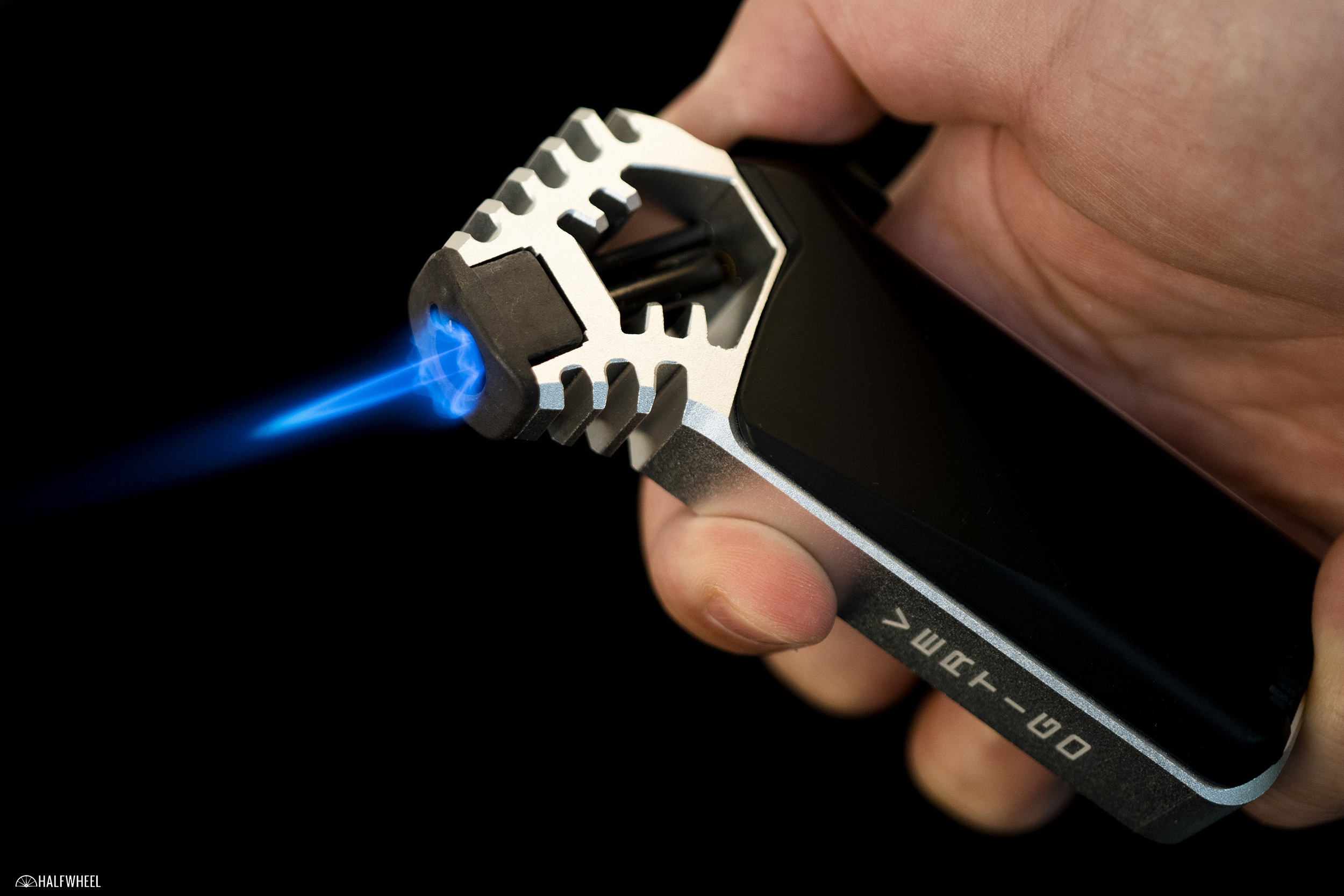
PROS
- It Feels Very Good in the Hand — The design is easy to use, fitting well in my hand and allowing my fingers to wrap around it and my thumb to engage the ignition without issue. It also doesn’t seem to have any bias towards one hand or the other, though I can’t recall the last time I lit a cigar left-handed outside of for the purpose of testing a lighter. While it weighs just about 3.5 ounces, it strikes a good balance between being light yet substantial, as well as balanced. It easily ranks among the most ergonomic lighters I have used in recent memory.
- The Flame — With a full fuel tank and the flame adjustment set properly, the Vertigo Cyborg puts out a large, single flame that will light the biggest of cigars quickly without sacrificing the precision needed for smaller ring gauges. There may not be a one-size-fits-all lighter, and a triple- or quad-flame lighter will work more quickly on big, thick cigars, but this is another solid option in the steadily growing segment of single flame lighters with larger elements, which I find very appealing.
- The Large Flame Wheel — This is one of the larger flame wheels I have found, and it moves rather easily. If such a feature would be helpful due to arthritis or other mobility limitations, this would certainly be a good option.
- The Cooling Fins — The frame of the Cyborg is cut from a whole aluminum piece, and the upper portion is designed to achieve increased heat dissipation, increased airflow and lighter weight, as well as a unique design. While I might take issue with the design, the cooling fins do a good job at cooling the lighter. You still need to give it a few seconds to cool down and I wouldn’t recommend touching the burner right after using, but the functionality is definitely there. I would be interested to run some tests on how quickly this cools compared to other lighters, but it seems to cool a bit more rapidly.
- It Works at High Elevations — The company says the Cyborg will work at elevations up to 12,000 feet, making it an appealing choice for those who live in higher elevations and have issues with other lighters.
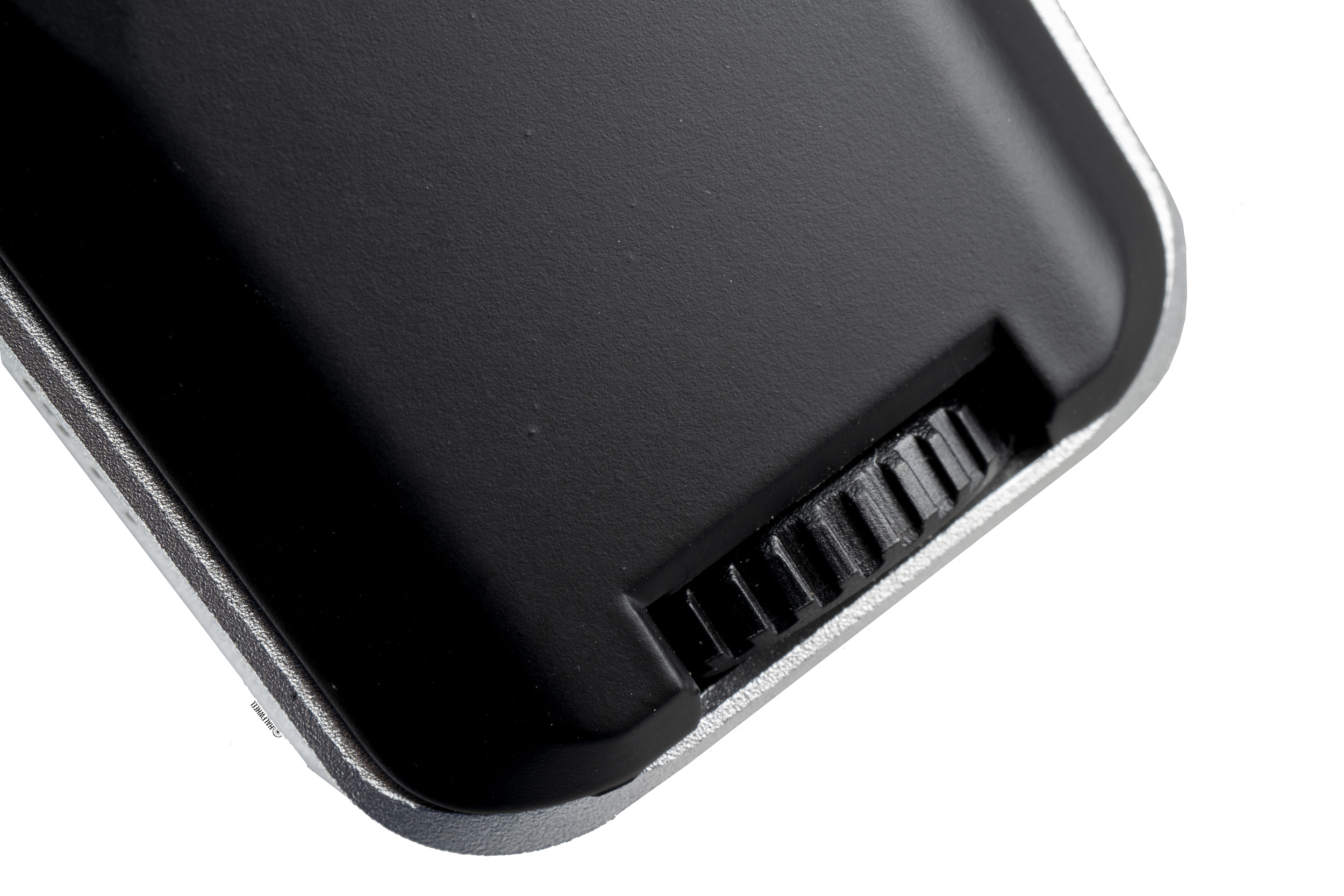
CONS
- No Fuel Window — Why there is no fuel window is just perplexing in this day and age, yet there are plenty of lighters that don’t have them, many of them in this segment. I just don’t understand why this is, but Rosemary Sharp, president of the Lotus Group/Integral Logistics, noted that many of the company’s similar offerings use an opaque tank, which is a bit less expensive than polished clear tanks. Assuming the premium for a fuel window was reasonable, I would gladly pay it, and this is easily the number one thing that keeps me from fully recommending this lighter.
- The Flame Adjustment Wheel Could Be a Bit Firmer — I didn’t travel with the Vertigo Cyborg much, but when I did, I seemed to notice the flame adjustment wheel would move a bit easier than I wanted. One time, I took it in the car with me, went to light my cigar, and got just a tiny soft flame, leading me to think I was out of gas. Fortunately, all it needed was to be turned up, but I’d like to see it be just a bit more resistant to stray bumps.
- The Fuel Valve Seems Really Deep — This first came to my attention when trying to bleed the lighter before refilling it. I used a small tool from JetLine that I keep next to my butane cans, and thought it was odd that nothing happened when I inserted it to bleed the lighter, something I’ve never experienced with any other lighter I’ve reviewed. This might not be an issue for you, and in my case it was one I could work around with my a small screwdriver or my XIKAR MTX scissors and one of the fold-out tools it offers, but it just seems like one of those things that didn’t need to be the way it is. According to the company, this is simply a result of the size of the large flame adjustment wheel and the casing.
- Flame Sputtering — Everyone has likely seen a lighter sputter and spit out a big flame, but the Cyborg seems to be particularly prone to it, especially when the butane tank is running low. However, while most lighters seem to just gradually decrease the flame, the Cyborg sometimes increases it as the fuel tank drains down. These seem to get particularly compounded if the tank wasn’t fully bled prior to being refilled.
- The Design — By far the most subjective, but I’m not inherently crazy about the Cyborg’s design, particularly the upper half. The pronounced ridges that give it function as well as a distinct look, though they just don’t completely resonate with me.
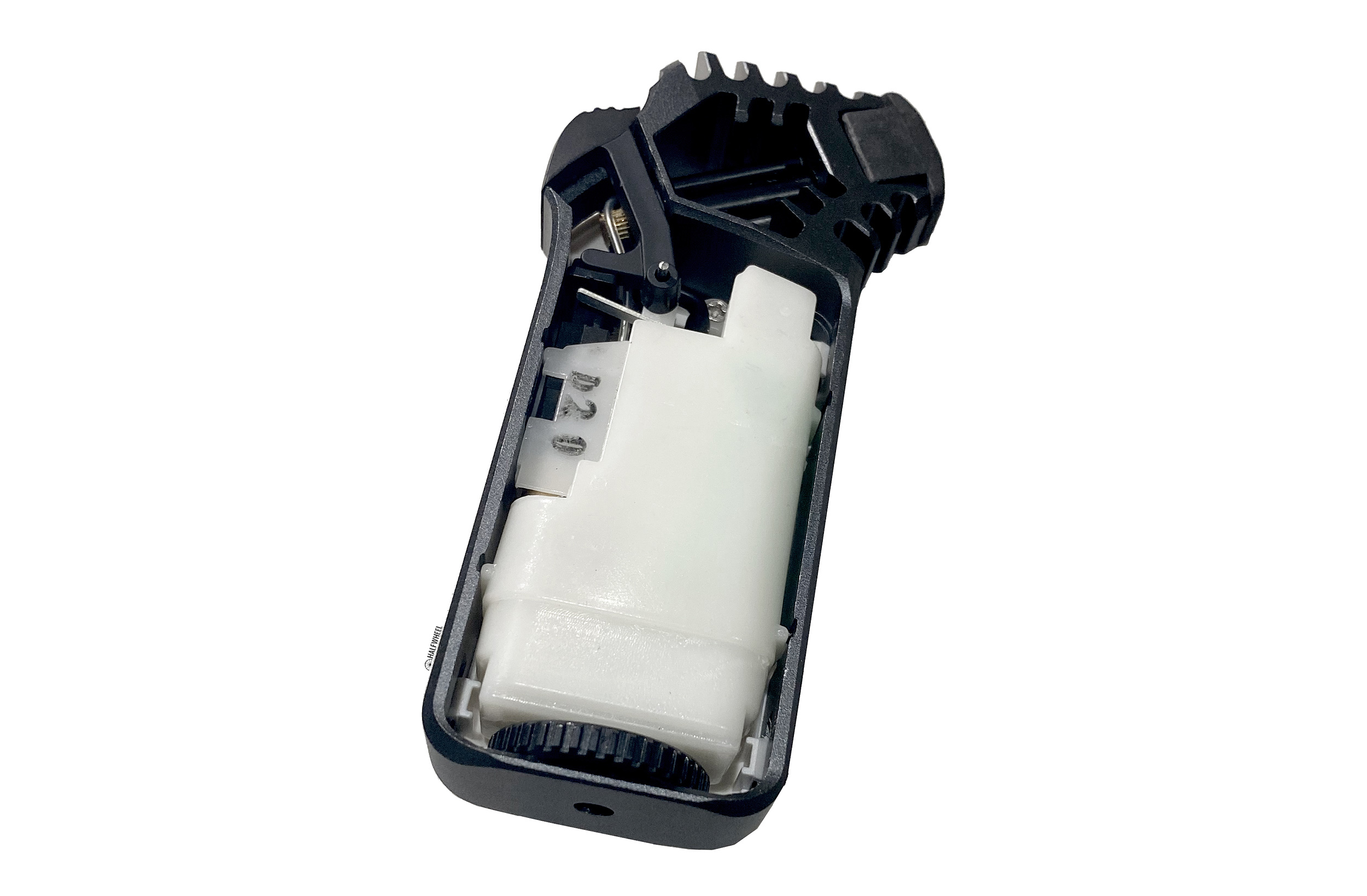
THE COMPETITION
As Lotus’ more value-oriented brand, Vertigo itself offers a majority of the competition for the Cyborg, meaning a tabletop, single torch lighter around the $25 mark. But there are options from other company in that space, with some of the standouts listed below:
- Vertigo Serpent ($25) — One of the most direct competitors, this is largely a design difference but offers a locking flame and a design that is rather familiar among this segment. I haven’t used this model, but it would seemingly be a worthwhile option though seems to lack the visible fuel tank and is only guaranteed to work at elevations up to 8,000 feet.
- Vertigo Hades ($30) — A newer design from Vertigo, it works up to 12,000 feet and offers a huge fuel tank and oversized single torch flame. I have used this model a few times and have found it to be both easy to use and very effective at lighting cigars, if occasionally a bit overpowering. It also offers a locking flame, something not as needed in the cigar segment, but which can be a helpful feature occasionally.
- Vector Volt ($24.95) — This also offers a single action ignition and large fuel tank, though this one is clear. I haven’t used this model, but just going by looks would make this a worthy competitor to the Cyborg.
- BernzOmatic ST2200 Micro Torch ($30) — This hardware store staple and the many like it are an unconventional approach to lighting a cigar, but they certainly work. They run on the same butane as your other cigar lighters, and like all of these, are capable of finishing off a creme brûlée. This model comes with an attachment that is designed for soldering work, definitely its most unique selling point. It can also switch to a soft flame if you prefer that style for lighting your cigar.
- JetLine Echo ($39) — JetLine’s options in this segment are a bit more limited, but the Echo offers a unique, curved design that has evolved over the years and also offers a soft flame lighter as well as a built-in punch cutter.
- Firebird Hookah Jet ($9.99) — The name might suggest a specific use, but this can easily work on cigars as well. It is smaller than the Cyborg, but it offers a visible fuel tank and a capable single jet torch.
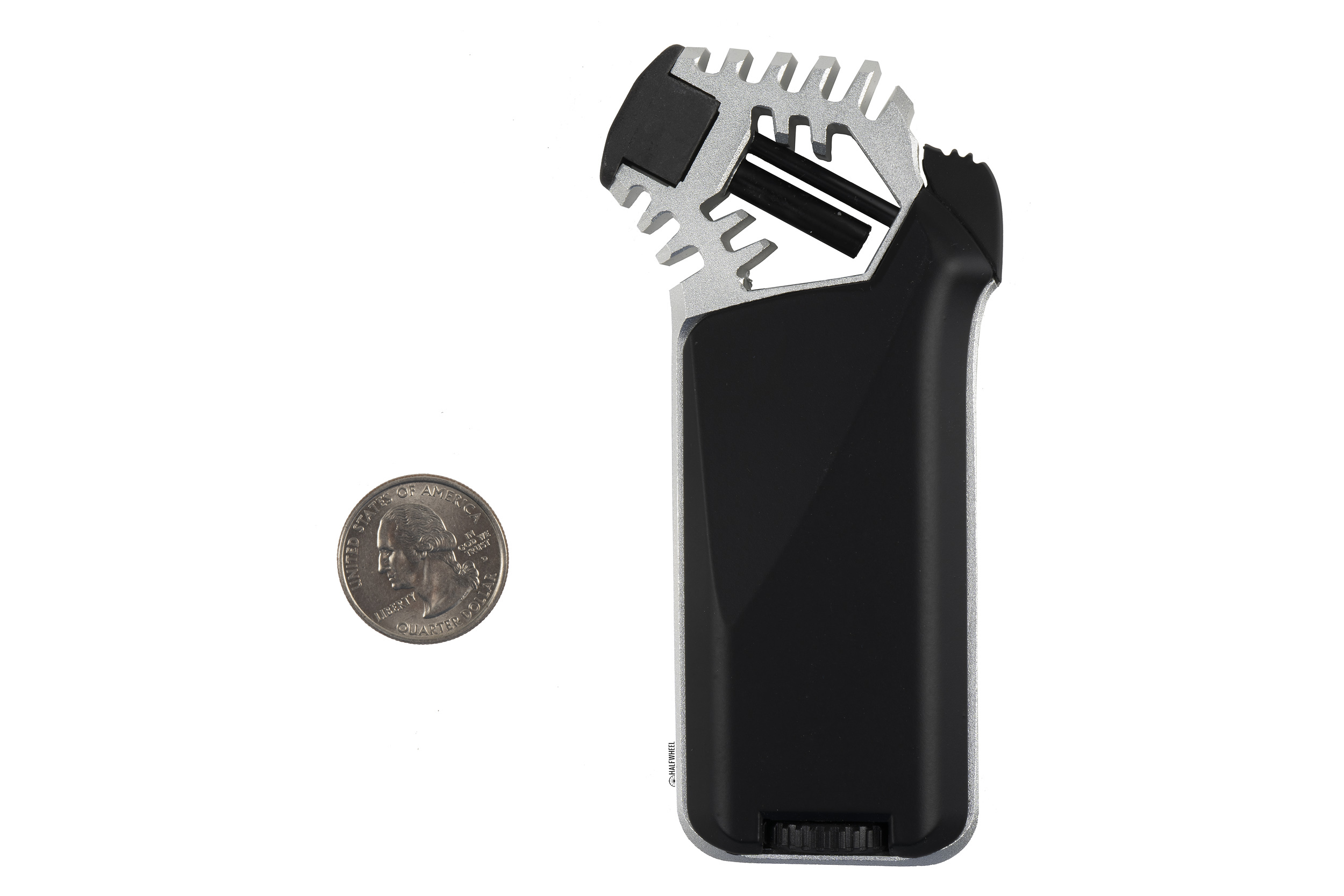
SHOULD YOU BUY IT?
No.
This is one of the tougher lighters I’ve had to give a no to, as it is one of the most ergonomic lighters I have used lately. While I might suggest checking it out, there is just enough that gives me pause about recommending it. The lack of a visible fuel window is the big one, and I could live with it if that was the only problem, since a number of competing products don’t offer that feature. The flame adjustment wheel is easy to use but still a bit loose, and there were enough times when the flame either over-delivered or sputtered that I began to question what was going to come out each time I used the Cyborg. As I noted above, with a full tank and a properly set flame adjuster, the Vertigo Cyborg is a perfectly good and usable lighter with stellar ergonomics. But when it’s not perfect, or when that fuel tanks goes empty without warning, it leaves just enough to be desired to have me encouraging someone to spend $25 on it.
The lighter used for this review was purchased by halfwheel.




